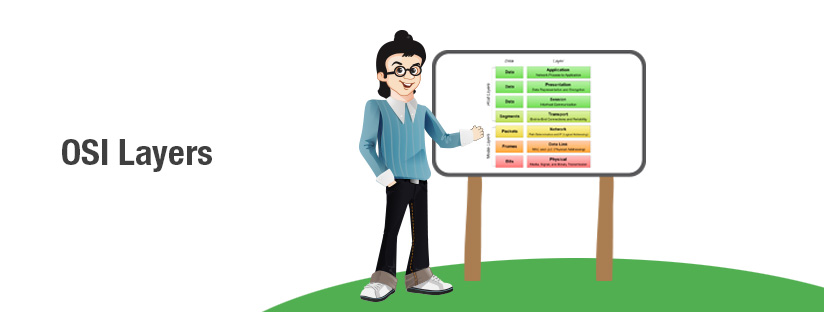Published on: October 6, 2010 by Jithin Vijayan

Scenario:
You must be hearing the word IP address from day since you’ve been to internet. Have you ever thought what these numbers signify or what is their role in the internet. Are they really the wheels that drive the DNS. Before going anything in detail I will explain the basics and the seven OSI layers which lays the foundation for network protocols and some other important related topics.
I will brief the overview of OSI model first.
OSI(Open Systems Interconnection) model is actually a framework for the networked systems that allow communication over all types of computer systems. The System is divided into seven seperate but related layers. Each one has their own functionalities and need to provide and receive services from the layer above and below respectievely. The OSI layers are
1.Physical Layer
This is the lowest among OSI layers which is responsible for the transmission of data in the network through a physical medium. Physical medium includes the links like cables and wires,the interfaces used to connect the devices, their characteristics etc.These factors influences the transmission rate of data through a medium.
2.Data Layer
As explained earlier each of the layer is related to the other lying above and below. Data Link Layer transforms the raw data from the physical layer and is responible for node-to-node delivery. It makes the physical layer error free to the upper layer.
This layer makes the data received into manageable units called frames. The appropriate protocol to each data is assigned in this layer.Switches and hubs come under this category. They are also known as layer 2 devices.
3. Network Layer
If the above layer is responsible for the node to node delivery this layer is the one responsible for source-to-destination delivery of a packet. If the two systems are connected to same link, there is usually no need for the network layer. But if they are connected in different network then this layer has to play its part to accomplish the delivery of the packets from source to the destination. Packet conceptualisation of data is introduced in this layer. Routers and gateways are the devices included in this layer. They are also known as layer 3 devices. The routing of packets is also done within this layer.
4. Transport Layer
Transport layer ensures the source-to-destination delivery of the entire message. Whereas the network layer ensures only the end-to-end delivery of each packets they don’t recogonize any relationship between those packets. Here this layer makes sure that the entire message is being transmitted to the destination. The message here is divided into different segments. Each segment contains a sequence number which helps them to reassemble the message correctly.
5.Session Layer
The above layers explained how data is transmitted across the network. This layer is responsible for the establishing, maintaining the interaction between the systems. As the name suggests, a session is created between the two devices and they communicate with each other through this session.
6.Presentation Layer
We just read that data is transferred into many forms in their course of transfer from one source to desination. Here the data transmitted is in the form of ones and zero to be precise in binary format. So there should be some syntac and semantics that should be followed in the process. Ensuring the data and message over a node or a network is as much important as maintaining their syntax. The data transmitted should be kept intact after the process then only we can say the process is successful. Encryption, Compression are some techniques that maintains the data integrity.
7. Application Layer
This is the topmost layer on OSI layers and this is the layer which enables humans or software to access or read the data. File transfers, electronic messaging, e-mail are some services included in this layer.
The main idea behind explaining these layers is to provide you an overview of how a data is transmitted and to correlate with terms associated like packets and frames.
IP (Internet Protocol)
It is a protocol used for communication over a network using the Internet Protocol Suite. It is a transmission mechanism used by the TCP/IP protocols. TCP/IP protocol suite was devoloped much before the OSI model. They have five layers: physical,data link, network, transport and application.
IP is a protcol defined by TCP/IP at the network layer. The protocol is an unreliable and connectionless datagram protocol. It only ensure the end-to-end delivery of packets from source-to-destination there isn’t any error check mechanisms or tracking for the data transmitted which make the protocol an unreliable in the transmission. IP is usually paired with reliable protocol TCP (Transmission Control Protocol) to a increase the reliablity. TCP is a protocol defined at the transmission layer of the TCP/IP suite.
As we read that TCP/IP suite have many protocols defined at each layer. At transport layer there are two important protocols TCP and UDP. TCP is a reliable connection oriented protocol where as UDP is a unreliable connecionless protocol. TCP includes functions like error control, flow control, congestion control which ensures the integrity of data transmitted.
Here the role of TCP is acting an intermediary between the application layer and the network layer of protocol suite. TCP/IP Protocol suite holds a structure similar to the layers in OSI. The following figure will help you to understand the architecture better.
Category : General, Linux, Special Offers, Training

Add new commentSIGN IN